 If you look to the left there are links to our websites on Ash Trees - Citrus Trees - Palo Verde Trees – Pine Trees – Queen Palms . There is also a link to our YouTube channel.
If you look to the left there are links to our websites on Ash Trees - Citrus Trees - Palo Verde Trees – Pine Trees – Queen Palms . There is also a link to our YouTube channel.
Warner's Tree Surgery is a family business that consists of my wife Pat, who manages the office and answers the phones, and me - Warner . I've been doing this for over 50 years.
How to Care for Queen Palms in Arizona
this video, we share our tips and tricks on how to prevent and treat some of the common problems that affect queen palms in Arizona, such as frizzle top and fusarium wilt. We also recommend using the Lutz Spikes, which are specially formulated for palms and other tropical plants. We are Warner’s Tree Surgery, a family-owned and operated business that offers expert tree disease diagnosis and treatment. We have been serving the Phoenix area for over 50 years. Contact us today for a free estimate.
Microbes in the Sky How They Affect the Rain and the Trees
In this video, I talk about a recent discovery that NASA made about the microbes that live in the upper layers of the atmosphere. These microbes are called pathogens, and they are tiny organisms that can cause diseases in plants and animals. I explain how these microbes travel around the world, how they affect the formation and properties of raindrops, and how they might cause new and unknown diseases in trees and other plants. I also share my perspective as a tree doctor, and why we need more research and monitoring to understand and protect our forests and ecosystems.
How to Identify and Treat Lemon Tree Diseases
Lemon trees are citrus trees that produce bright yellow fruits with a sour taste. They are native to Asia and can be grown in warm climates. However, they can also suffer from various diseases that affect their health and appearance, such as canker rot, root rot, and leaf spot. In this video, I will show you how to recognize the symptoms of common lemon tree diseases and how to treat them using natural and effective methods. I will also share some tips on how to prevent these diseases and keep your lemon trees healthy and happy. As a tree doctor and an expert in tree diseases, I have over 50 years of experience in caring for lemon trees and other plants. If you want to learn more about this amazing fruit and how to protect it from diseases, watch this video and subscribe to my channel for more tree-related content.
How to Identify and Treat Ash Tree Diseases in Arizona
Ash trees are elegant and resilient, but they can also suffer from various diseases that can affect their health and beauty. In this video, I will show you how to recognize the signs and symptoms of some common ash tree diseases, such as ash anthracnose, ash yellows, verticillium wilt, and emerald ash borer. I will also share some tips and tricks on how to prevent and treat these diseases using natural and effective methods. As a tree doctor and an expert in tree disease, I have years of experience and knowledge in dealing with ash trees in Arizona. If you love ash trees and want to keep them healthy and beautiful, this video is for you!
The Videos Above Were Made By Me Warner Working, With The Help Of The New Artificial Intelligence Programs, And I'm Really Proud Of Them. I Have Been A Tree Surgeon For Over 50 Years.
Back Then If You Were A Tree Docter Working With Tree Diseases, You Were Called A Tree Surgeon, That's Before They Invented The Term Arborist.
Anyway, I Have Been Working In Mesa AZ Sence 1990, I Am Currently 77 Years Old.
If You Live Within 30 Miles Of Mesa, Arizona I Would Be Glad To Come Out And Take A Look At Your Trees
Expert Tree Disease Diagnosing and Treatment:
We offer expert tree disease diagnosing and treatment. We have a knowledge of the inner-workings of plant biology and a working overview of how a trees works as a complete system. This knowledge has arisen from 50 years of study and practical fieldwork.
Help For Old Citrus Trees:
Citrus trees that are properly cared for can live and produce good fruit for more then 80 years. We can usually reverse most or all of the damage done to citrus trees.
Help For Sick Queen Palms
We offer help for sick queen palms by by injecting them with specialized nutrientss to kick start the healing process.
If you’re interested in how trees work, I’ve laid out the basics in the articles below.
Before embarking on that journey let me state a few general truths that will help you keep your trees healthy now.
-
If the leaves look or feel dry you need more water.
-
Too much fertilizer can harm trees.
-
Over time back washing your pool onto your trees will be a problem.
-
As a general rule the more leaves a tree has the healthier it will be.
-
Sometimes, in high winds, too many leaves will cause a branch to break.
-
Sometimes, in high winds, a tree that isn’t well rooted will blow over.
The trick is determining if, when, and how much to trim a tree. Often the person that is advising you, on how to care for your trees, makes his living by trimming them.
Do you see the problem here?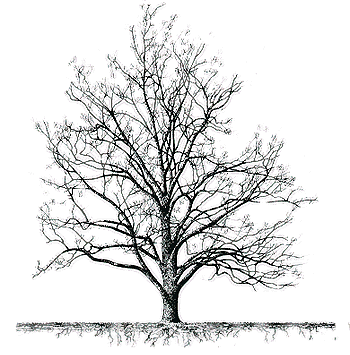
Protect your trees roots
Someone may try to sell you on redoing your landscape or removing your lawn. This will be bad for the root system. Someone may want to dig up the root system for whatever reason. This will be bad for the root system.
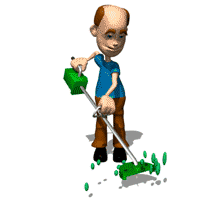 Believe it or not the most common cause of tree death that I see, is caused by the gardeners you hire to mow your lawn. What happens is, that in their attempt to do a good job for you, they cut completely through the bark of your trees.
Believe it or not the most common cause of tree death that I see, is caused by the gardeners you hire to mow your lawn. What happens is, that in their attempt to do a good job for you, they cut completely through the bark of your trees.
The list goes on but the truth is, most of the tree damage I see was caused by someone doing something that inadvertently harmed the tree
Its easier to keep a tree healthy then it is to make it healthy once its sick.
It is my intent here, to give you the information you need to better care for your trees.
Remember it is much easier to keep a tree healthy by correct pruning, proper fertilization, and maintaining healthy root system, then it is to return a tree to health once it is sick.
So let’s begin!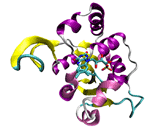
Tree health in a nutshell: Energy
In order for trees to live they must have energy.
When a tree gets sick, for whatever reason, the main thing that will determine weather it will recover or die, is the amount of energy it has to heal.
So how does a tree get energy? Like us trees are made of specialized cells. The only energy a plant cell can use is a chemical called ATP (Adenosine triphosphate).
Tree health in a nutshell: Sugar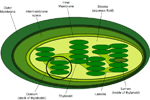
In order for a plant to make ATP it must first make sugar. Both sugar and ATP are manly produced in the leaves of trees. For sugar to be produced the leaves need light, air, water, and nutrients from the soil. Any interruption in this flow of recourses will force the tree to live off of its reserves. When the reserves are gone the tree will die.
Tree health in a nutshell: The Leaf
A trees leaves are a window in to the biological world of the plant. The trained eye can tell if the tree is getting the proper nutrients from the soil, and a knowing touch in the cool of the morning can help determine if the tree is getting enough water.
Tree leaves expel water as part of their normal function. Feel the leaves in the mornings. If you slide a leaf between your fingers and feel slight moisture, the tree is probably getting enough water. To learn more about water requirements and this technique follow this link.
Tree health in a nutshell: The Trunk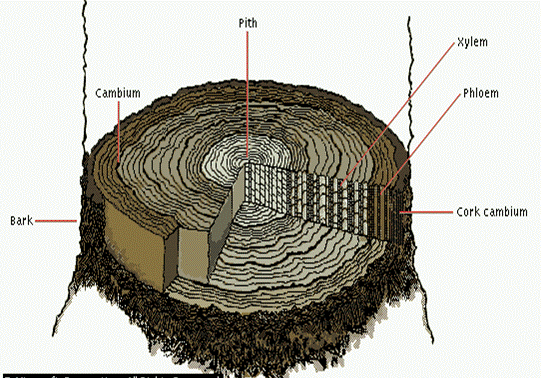
For water and nutrients to get to the leaves they must be collected by the roots and moved to the leaves. The bark and the cell layers under the bark transport water and nutrients to the leaves. They also transport sugar and other cellular recourses to the roots and other parts of the plant.
Tree health in a nutshell: The Roots
Here’s a list of top ten root facts I compiled a few years back. My apologies to David 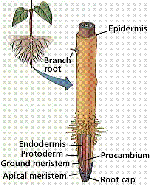 letterman.
letterman.
- Tree roots must have oxygen, water, and nutrients to function. Either excessive precipitation or drought can damage root systems.
- The feeder roots can extend two to four times beyond the branches.
- Most of the absorbing roots are in the top few inches of soil and grow upward toward the surface, not downward.
- Compaction of soil and covering roots with soil, paving, or water deprives roots of oxygen and is deadly to trees.
- Removing soil from the root zone of trees kills the nearly invisible root hairs. Trenching or grading severs tree roots.
- High root zone temperatures can develop from surrounding pavement, thus impairing the vigor of the tree.
- Grass growing in the root zone of trees can inhibit fine root development by as much as 90 percent compared to a natural environment.
- Root systems of urban trees are typically a fraction of their forest counterparts' because of space and soil limitations.
- Urban soils are often unsuitable for vigorous tree-root growth.
- Planting and maintenance procedures can "make or break" a tree's root system.
This link will bring up a page that graphically shows a tree as a system, please take a minute and look at it. This is the best graphical representation of a tree as a system I hav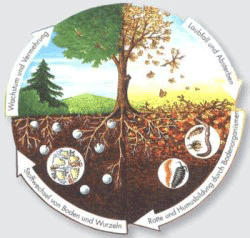 e seen. I apologize for the poor quality but I copied it a few years back and I have been unable to find a clearer picture on the internet. If anyone can give me a link to a better copy I would appreciate it.
My email address is warnerworking@yahoo.com, thanks.
e seen. I apologize for the poor quality but I copied it a few years back and I have been unable to find a clearer picture on the internet. If anyone can give me a link to a better copy I would appreciate it.
My email address is warnerworking@yahoo.com, thanks.
Also you need to click on the image once it comes up to see it in full size.
O.K. now let’s look at the parts in more detail.
Wikipedia: The free online encyclopedia.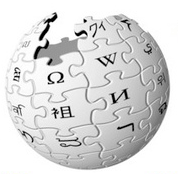
I remember when I first started my quest to understand how trees worked and how limited the information available was. That is certainly no longer true, thanks to the tremendous advances in science, particularly the human genome project and the advances in the internet we now have a wealth of knowledge at our fingertips that seems overwhelming.
I have found that the people at Wikipedia have presented this knowledge in an organized, useful and in-depth manner. As we go through the individual parts of a tree, I have linked these parts to the appropriate web pages on the Wikipedia website, by the images to the right of the text.
ATP and cellular energy.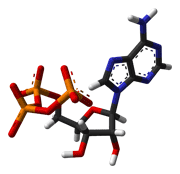
As is the case with many animal ailments, when a tree gets sick for whatever reason, the main thing that will determine weather it will recover or die is the amount of energy as expressed as ATP (Adenosine triphosphate) the cells have available to them in their recovery process
This may seem a strange place to start on our journey of understanding tree disease, but I found that by understanding the many biological Processes that must come together, to produce this basic cellular energy source, I was able to stand back and view the tree as a whole system.
Until I could view the tree as a system it was impossible for me to think creatively about how to treat them.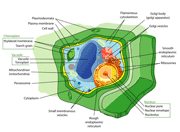
The Plant Cell
The world inside the plant cell is complex beyond belief and we are still a long way from completely understanding it. There are some things that we do understand in part at least.
The Plant Cell: How a cell fights disease.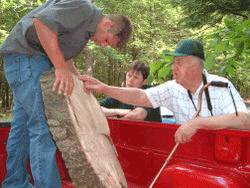
- Whenever a plant cell is attacked by apathogen, likea bacteria or a fungus, the cell next to it becomes what we call a reactionary cell.
- The reactionary cell then sends out a signal to the entire plant asking for help.
- The tree will move chemical resources, if it has them, to that reactionary cell.
- The reactionary cell will becomes very dense and form a barrier to the pathogen.
This is how a plant defends itself from attack. It forms a callous.
This process was researched extensively by Alex Shigo and is presented in his ground breaking book A New Tree Biology in 1989
The Plant Cell: Resveratrol more about cells signaling other cells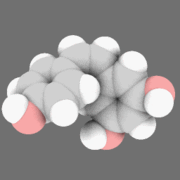
Resveratrol: While were on the subject of plant cells signaling one another, I should mention a discovery that was recently made in cell signaling. This discovery may lead to a partial cure for the aging process. The cis-isomer of Resveratrol is a phytoalexin produced naturally by several plants when under attack by bacteria or fungi. Phytoalexins are antibacterial and anti-fungal chemicals produced by plants as a defense against infection by pathogens. Resveratrol has also been produced by chemical synthesis, and is sold as a nutritional supplement derived primarily from Japanese knotweed. A number of beneficial health effects have been reported.
The Plant Cell: The Chloroplasts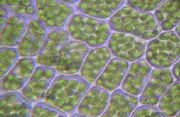
Chloroplasts are organelles found in the plant cells that conduct photosynthesis. Chloroplasts absorb light and use it in conjunction with water and carbon dioxide to produce sugars, the raw material for energy and biomass production in all green plants and the animals that depend on them. Chloroplasts are what make the leaf green.
The Plant Cell: The Mitochondria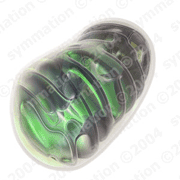
Mitochondria are sometimes described as "cellular power plants" because they generate most of the cell's supply of adenosine triphosphate (ATP), used as a source of chemical energy.
In addition to supplying cellular energy, mitochondria are involved in a range of other processes, such as signaling, cellular differentiation, cell death, as well as the control of the cell cycle and cell growth.
Mitochondria are the power generators in our cells as well. Old mitochondria emit the free radicals which are damaging to our health.
One of the benefits of taking Resveratrol is that it promotes the creation of new mitochondria. The new mitochondria convert energy in our cells more cleanly. It's like changing your old car for a more powerful and environmentally friendly hybrid model!
Now aren’t you glad you read this far?
The Plant Cell: The Mitochondria and the Cold Laser.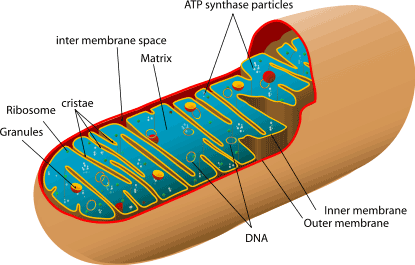
The Mitochondria can also be stimulated into increasing their production of ATP by the use of a Cold Laser Devices. It turns out that Laser Light with a bandwidth of 633nm can increase bone density cause cartilage growth and eliminate the pain associated with diabetic neuropathy to name a few. To learn more about this exciting development follow this link.
The Plant Cell: Micronutrients and the need to fertilize.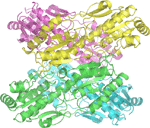
High Pressure Soil Injected FertilizationProper fertilization is vital to the health of trees. This is especially true here in the Valley of the Sun. We not only have a hot, harsh climate but we also have an acidic soil to contend with.
One of the best method for feeding trees is to have the fertilizer already bound to a water molecule before it is presented to the roots. We do this by pre-mixing the fertilizer in a tank and injecting it into the ground at high pressure. Our probe is designed to shoot the fertilizer both sideways and downward evenly, spreading out the micro nutrients and aerating the roots in the process.
Feeder Roots A few years ago, scientists discovered the specialized roots that pick up micro nutrients. They were surprised to learn that over 90% of these specialized roots were only 8 to 10 inches deep, and that they grew upward.
Don’t be fooled into having someone talk you in to 'deep root feeding' your trees. It is a waste of money because most of the roots that can actually process the fertilizer are shallow.
Mycorrhizae The first time we fertilize someone’s trees we also inject mycorrhizal fungal spores into the soil. This turns your roots into super roots and the mycorrhizal fungus becomes a permanent part of your tree's root system. This friendly fungi acts as a barrier to the bad fungus that lives in most Arizona soil.
Plants with Specal Needs Some plants, like queen palms, have specal needs. Queen palms evolved in a place where only a limited number of micro nutrients were available. In order for queen plams to stay healthy, they require a lot of manganese and manganise is not present in our native soil. This is why the queen palms do so poorly here when confronted with a fungal attack.
At Warner's Tree Surgery we are well versed in the particular needs of plants and in soil science, you can count on us to use our knowledge to do a good job.
Tree Structure: The Apical Meristem (growing tip) and the 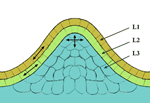 advantageous buds
advantageous buds
In the trunks of tree and in their roots are buds waiting to grow, we call these advantageous buds. Understanding the mechanism that starts them growing is necessary to understanding how trees work.
At the end of the branches and at the end of the roots are specialized cells that are called the Apical Meristem. The Apical Meristem produces a hormone that stops the advantageous buds from growing.
So if a giraffe were to eat the very top of a tree, the advantages buds would sprout, and a new top would grow producing leaves and energy for the tree. The same thing would happen if a gopher were to nibble on the ends of the roots.
So why is it considered bad practice to top most trees?
Note that I said most trees not all. Some trees like Mesquite trees or Olives actually do quite well when you top them whereas topping an Ash or a Eucalyptus tree could kill them.
To understand why it is bad practice to top most trees, you need to understand how crotches are formed.
Tree Structure: The Branch Collar 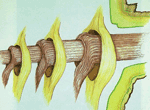
A branch collar is the attachment structure in woody plants that connects a branch to its parent branch or to the trunk. The branch collar consists of overlapping wood fibers.
During plant growth cycles, wood on smaller branches forms first. Wood at the base of the branch extends slightly over the face of the trunk, forming the branch collar. Then, the wood of the parent branch forms over the top of the basal branch wood, usually forming a circular structure called the trunk collar. Together, the branch collar and trunk collar are simply referred to as the branch collar. Branch collars can also be flat or somewhat recessed into the trunk or parent branch, as in some conifers.
The accretion of layers of wood behind the branch collar is a conical decay-resistant structure called the branch core. The knot found in lumber is this branch core.
When woody plants naturally shed branches because they are nonproductive, usually from lack of light, these branches die back to the branch collar. Insects and fungi decompose the dead branch, and it eventually falls off, leaving the exposed branch core. The branch core resists the spread of decay organisms into the parent branch or trunk during the time new wood increment growth seals over the wound.
An old crotch that was started when the tree was young has well established collars.
A new branch that starts from an advantageous bud takes years to acquire these advantages.
So in most cases topping trees is bad!
Tree Structur: Cellular Layers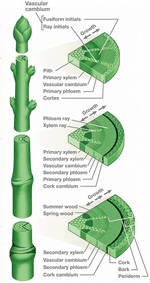
There are five layers in the Trunk roots and branches. Each layer has a special job.
- The Outer Bark - This outside layer protects the tree from injury or damage
- Phloem - (flow-em) This next layer feeds the tree. The food goes from the leaves down through the branches and trunk to the roots.
- Cambium - This next layer is a very thin growing layer. It makes new cells.
- Sapwood - (new xylem) This layer is made of the youngest layer of wood. It carries water and minerals up the tree from the roots through the trunk and branches to the leaves.
- Heartwood - This is the center of the tree. It is old xylem and is dead wood. It gives the tree support but often rots away.
Tree Structure: The Roots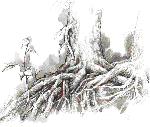
- Tree roots must have oxygen, water, and nutrients to function. Either excessive precipitation or drought can damage root systems.
- The feeder roots can extend two to four times beyond the branches.
- Most of the absorbing roots are in the top few inches of soil and grow upward toward the surface, not downward.
- Compaction of soil and covering roots with soil, paving, or water deprives roots of oxygen and is deadly to trees.
- Removing soil from the root zone of trees kills the nearly invisible root hairs. Trenching or grading severs tree roots.
- High root zone temperatures can develop from surrounding pavement, thus impairing the vigor of the tree.
- Grass growing in the root zone of trees can inhibit fine root development by as much as 90 percent compared to a natural environment.
- Root systems of urban trees are typically a fraction of their forest counterparts' because of space and soil limitations.
- Urban soils are often unsuitable for vigorous tree-root growth.
- Planting and maintenance procedures can "make or break" a tree's root system.
Tree Structure: The Roots and Mycorrhizal Fungi
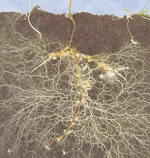
More than 90% of the world’s land plants form some sort of mycorrhizal relationship in their native habitats. According to the USDA Forest Service some researchers estimate mycorrhizal fungal filaments can explore volumes of soil hundreds to thousands of times greater than roots alone. Additionally, some of these types of fungi produce growth regulators that stimulate feeder root elongation and branching, thus increasing the total number of feeder roots produced by the plant. The obvious benefit being that the increased root surface of the plant enables it to absorb more nutrients and moisture.
In most undisturbed, natural settings mycorrhizae are abundant in uncountable numbers. But disturbed soils, like construction sites, new home sites, or sites where trees are growing in lawns treated with chemicals are places where the mycorrhizae are destroyed and depleted. In these situations plants tend to suffer from poor nutrition, repeated viral and bacterial infections, and insect attacks. Unfortunately, the response to a situation like this is to apply more chemicals in ever increasing volumes causing nothing more than a downward spiral in regard to the health of not only the sick and weakened plants, but also the health of your yard and garden
The Pathogens: Fungus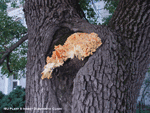
Trees live with fungus in their natural environment they survive, and thrive. In fact a large part of a trees natural recourses are primarily used for fighting fungus.
It is usually a lack of recourses in the form of stored sugars and hormones in the roots and branches, that causes a tree to give in to a fungal attack.
In an urban setting this usually happens when someone fails to water or feed their trees correctly or does something inappropriate to cause them harm.
When bark that has developed in the shade is suddenly exposed to the sun it may become superheated and sunburned. This causes damage to the cellular layers of the trunk and the whole system suffers.
This is another reason for not topping trees. When most trees are toped it removes the protective crown and the middle of the tree can become sunburned.
In cases like this, it is sometimes necessary to treat the tree with a fungicide to give it enough time to recoup its resources, and heal itself, by forming a callous to stop the spread of the fungus.
Please note that in most cases when a tree is in danger from a fungal agent, it is because something wrong was done to it by someone.
The Pathogens: Bacteria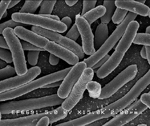
Bacterial infections in trees like funguses are usually controlled by keeping the trees healthy.
When they get out of hand it is possible to treat them with antibiotics.
The usual bacterial ailment I see in trees is called bacterial wet wood. Bacterial wet wood is identifiable by oozing sap that is caused by the production of methane gas in the cellular layers of the tree trunks.
It is worth noting here that tree diseases can be spread from tree to tree by untrained workers who either don’t know, or don’t care enough, to sterilize their saws and pruning tools, between one job and the next.
Sterilizing tools is easy. you just needs to spray your tools with a disinfectant spray. The sprays you normally use to keep your kitchen disinfected will work just fine.
The Pathogens: mycoplasma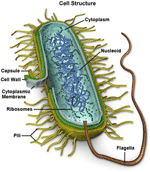
Mycoplasma is a genus of bacteria that lack a cell wall. Because they lack a cell wall, they are unaffected by some antibiotics such as penicillin or other beta-lactam antibiotics that target cell wall synthesis.
Keeping a tree healthy through correct watering fertilizing and proper pruning practices is the best way to control a mycoplasma infection.
The Pathogens: The Virus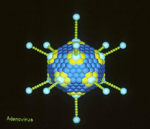
Viruses are obligate intracellular parasites that cannot reproduce outside host cells. When a virus infects a cell, the cell's normal biochemical processes are interrupted and the energy of the cell is used to make thousands of identical copies of the infecting virus from the cell's protein, DNA and RNA building blocks. This often, but not always, eventually leads to the death of the infected cell.
Keeping a tree healthy through correct watering fertilizing and proper pruning practices is the best way to control a viral infection.
The Pathogens: Insects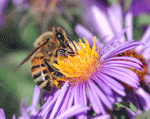
There are many beneficial roles that insects play in the life of trees. The very soil a tree needs to thrive would not exist in a forest setting, without insects.
Insects also play a vital role in the reproductive process of trees.
However sometimes in an urban setting the balance is tipped too much in the insects favor and they can literally eat a tree alive.
When this happens the arborest needs to determine how to treat the tree. The first thing to do is to establish how the insect is attacking the tree.
Some insects bore into the bark, some insects feed primarily on the wood, and some insects bore from the tips of stems.
By observing the method of attack and finding a sample of the insect an arborist can determine what type of insecticide to use to help control the insects that are attacking the tree in question.
Again keeping a tree healthy through correct watering fertilizing and proper pruning practices is important when fighting insect infestation.
The Deadliest Pathogen: Man
Believe it or not the most common cause of tree death that I see, is caused by the gardeners you hire to mow your lawn.
What happens is, that in their attempt to do a good job for you, they cut completely through the bark of your trees.
Shortly behind the person with the weed eater are the folks that give advice on landscaping, insect control, sprinkler installation.
Sadly one of the most harmful of the tree pathogens you may come into contact with, are the people you have caring for your trees.
Again, most of the tree damage I see is caused by someone doing something that harmed the tree.
Queen Palms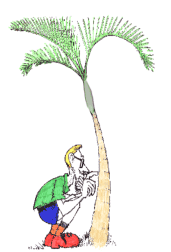
If the fronds of your queen palms look stunted or frizzled, your queen palms have a fungal infection commonly called 'Frizzle Top'. This disease is spread by rain, insects and people that trim your trees and don’t sterilize their tools properly.
A healthy tree that has all the micro nutrients it needs can fight off this infection.
Unlike most other palm trees, the queen palm mainly uses manganese in large amounts as an enzyme-activator to fight off diseases. The reason queen palms are susceptible to fungal infection is usually because there isn’t enough manganese available for the new frowns as they develop.
By regularly introducing manganese into the root system in the correct amounts (usually 12% or more), the new frowns will be more resistant to fungal infections.
Our treatment of queen palms includes soil injected fertilization with the correct amount of manganese added to the soil where the regular watering will slowly dissolve and disperse it.
In more urgent cases, it is best to also use tree injectors to get the micro nutrients directly into the tree. This will get the necessary manganese and other micro nutrients to the fawns quicker.
To set up an appointment for Warner to evaluate the health of your trees and develop a treatment plan please call us at (480) 969-8808.
Articles on tree disease in PDF format.
Here are some excellent articles on plant disease that are in Adobe PDF format.
You will need an Adobe Reader to access them. Here is a link for the Adobe Reader if you need it.
It is worth noting here that while these articles are factual and of high quality and loaded with excellent information, that there are options for treating tree disease that are available to the professional arborist that are not mentioned here.
There are medicines that a licensed arborist has available that are not usually available to the general public. Some of these inject able medications as well as the introduction of mycorrhizal fungi into the root zone seems to work quite well in many of the diseases mentioned below.
Warner
Diseases of Citrus in Arizona PDF
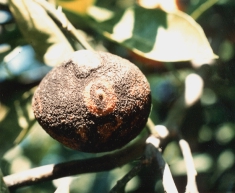
Guidelines for the control of Coniophora eremophila on lemon trees in southwestern Arizona PDF
Diseases of Urban Plants in Arizona PDF
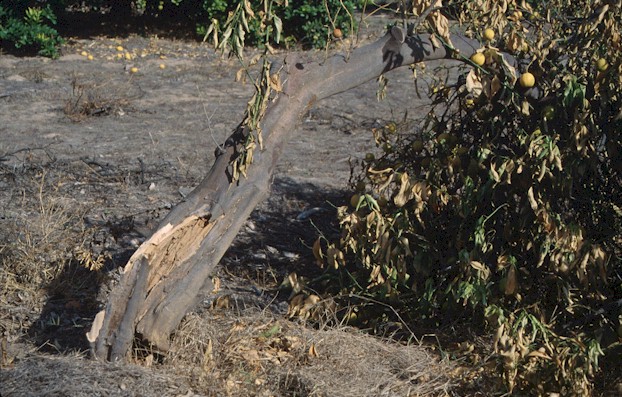
Dwarf Mistletoes PDF
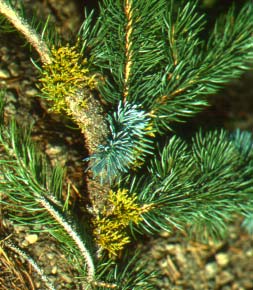
Root-knot Nematode PDF
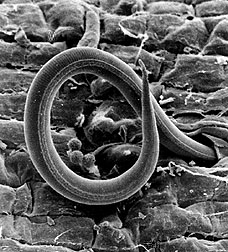
True Mistletoes PDF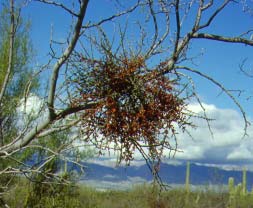
Comandra Blister Rust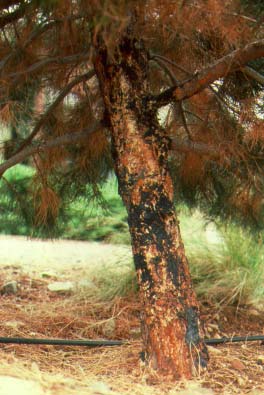
Update 2017
Wood is a highly ordered arrangement of living, dying and dead cells. These tree cells function much like a lamp wick where the tree is anchored. The roots are bathed in a nutrient-rich liquid which transports these nutrients plus moisture to the top where all is consumed.
A tree (and the cells) supports an ever-flowing wet system that must be maintained at all times. If the process fails to provide water at any point the tree will eventually die due to the failure of both water and food requirements that are necessary for life. Here is a biology lesson on tree cells.
Images used are provided by the University of Florida, Landscaping Department.
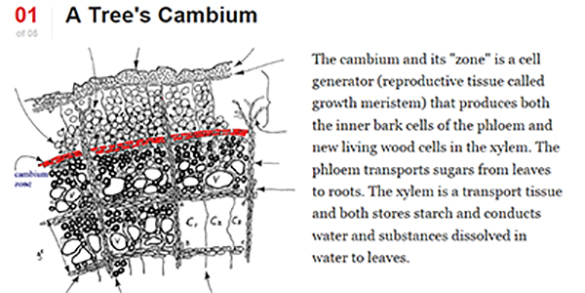
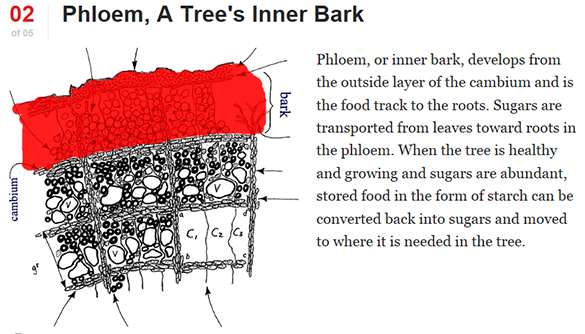
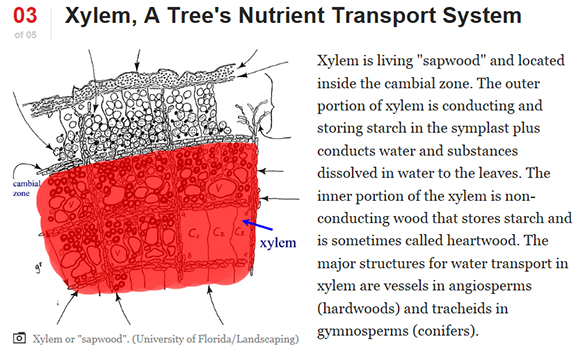

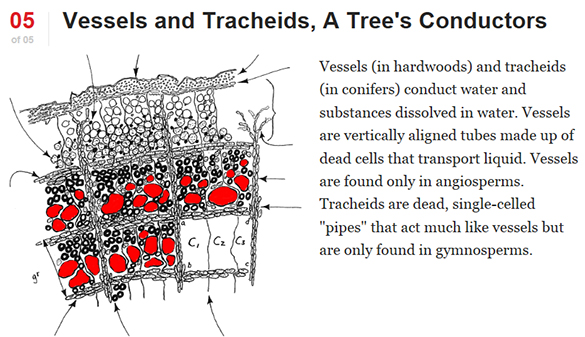
Also See Plant Antimicrobial Agents and Their Effects on Plant Pathogens
Abstract
To protect themselves, plants accumulate an armoury of antimicrobial secondary metabolites. Some metabolites represent constitutive chemical barriers to microbial attack (phytoanticipins) and others inducible antimicrobials (phytoalexins). They are extensively studied as promising plant and human disease-controlling agents. This review discusses the bioactivity of several phytoalexins and phytoanticipins defending plants against fungal and bacterial aggressors and those with antibacterial activities against pathogens affecting humans such as Pseudomonas aeruginosa and Staphylococcus aureus involved in respiratory infections of cystic fibrosis patients. The utility of plant products as “antibiotic potentiators” and “virulence attenuators” is also described as well as some biotechnological applications in phytoprotection.
We currently serve - Mesa – Gilbert - Tempe - Chandler - Scottsdale – Paradise Valley - East phoenix.